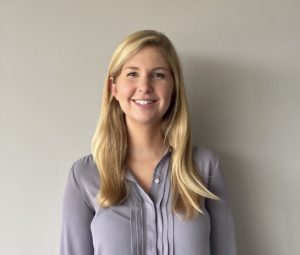I’m baaaack! And I have the 3rd and final installment of our empathy series. If you need to catch up, we started with why Mind Over Machines uses empathy and you should too. Then, I gave you practical tips for practicing empathy in the workplace. Now, it’s time to step into the lab. No, you don’t need safety glasses, but we will be getting hands-on.
I am going to walk you through an exercise we call Museum Tour. It is just one of a set of activities MOM uses to help businesses identify, explore, and communicate the value of their work. These exercises are part of our Workforce Ascension℠ & Enhancement (WAE) framework. WAE is a human-centric approach to automation that frees employees from mindless tasks so they can grow the human value of their work. Or, to paraphrase our mission statement, it’s how we enrich lives by helping the world work smarter.
The Museum of [Insert Your Company Name Here]
Imagine a museum built for your work.
Sound crazy? Just think about it for a minute. Museums are cool spaces that inspire wonder. They showcase groundbreaking innovation that has driven humanity forward. Nobody ever made a Museum of the Mediocre. No Museum of Repetitive Tasks Until 5 p.m.
“You are building an immersive storytelling experience. The goal is to identify what matters to you and your business so you can share it with all your internal and external stakeholders. Good museums and their docents make sure people see what is important and why it’s important.”
The act of designing a museum about your business is a unique blend of appreciative inquiry and visual thinking. You are intentionally taking the time to get off the hamster wheel of tasks to accomplish and problems to solve. Interrupting the daily grind to slow down and acknowledge how far you’ve come. And you’re not just writing a memo about it. You are creating a space, a visual representation of your company’s achievements and why they matter. So, what exhibits are in your museum? What’s on the main tour through it?
Your Culture Is Your Story
The concept of “company culture” has attracted some probably well-deserved backlash lately. As a society, we’ve realized the idea of hiring for “culture fit” is exclusionary and sometimes even discriminatory. A diversity of voices and ideas is always going to produce superior results. But what if we don’t define culture as a certain way of being, thinking, or acting? What if companies built their culture around shared perceptions of what they’ve been through and how they learned from it? How they innovated, improved, and moved forward together.
At MOM, we believe culture is the story we tell about ourselves. What are the stories your company tells about itself? How can you work those stories into one cohesive narrative? The Museum Tour exercise is designed to help you do exactly that. You are building an immersive storytelling experience. The goal is to identify what matters to you and your business so you can share it with all your internal and external stakeholders. Good museums and their docents make sure people see what is important and why it’s important.
How To Play:
Objective: Build a museum to showcase your business. Identify your main exhibits and lay them out in your museum. Plot how a museum tour will move through your exhibits. Which stories are told where and why? What are their significance? How do they influence life today?
Step #1: List 3 – 5 stories that reflect your culture.
This is a group discussion. Think about major events in the history of your company, turning points that led to where you are today.
Step #2: Write short blurbs for each story.
This is your museum tour guide’s script. They will recite these stories as they walk people through your museum.
Make sure each blurb includes the following:
a. Why does this story matter?
b. Who was involved?
c. What was the impact?
Step #3: Draw a map of your museum to show how you’d organize the delivery of these stories.
Finished Product: Create a billboard (or large poster) of your museum in a space where all team members can interact with it. Take pictures of the stories you wrote in Step 2 and place them in the appropriate spaces on the map you made in Step 3. Draw in arrows to show how traffic will flow along your museum tour.
Extra Credit: If you happen to have some metaverse geeks around or want to borrow a couple of ours, imagine the virtual museum you could build in AltspaceVR.
The Story of Us
The Museum Tour exercise is rife with opportunities for empathy. As you create the immersive storytelling experience of your company, you look back to understand what your founders were trying to do. What was their big idea, and how did they surmount obstacles to make it a reality? Suddenly, the lady in the cube next to you isn’t just grinding out her 40 hours a week. Turns out, she was on the team that orchestrated the Great Pivot of 2008, which got you through the recession. You are seeing coworkers’ contributions in a new light, connecting the dots into one glorious whole.
Most importantly, you are zooming out to that 30,000-foot view most of your customers inhabit all the time. There’s no better way to exercise your external-audience empathy muscle than to create an entire museum devoted to showing the outside world who you are, what you do, and why it matters.
WAE activities like Museum Tour may seem foreign to you and your team at first. They definitely run counter to the To-Do-List tackling and fire-extinguishing of “business as usual.” But they are well worth your time. They retrain our brains to think in more creative, connectional, human ways, which is critical in the AI economy. They unify your people in service to a shared vision and keep you focused on the big picture, always evolving your business to resonate with clients’ interests and needs.
If you’d like to try your hand at another free WAE exercise, you can download one here.
About Tally
 Tally Aumiller is Baltimore born and raised. Her dad was a logical lawyer; her mom a hypercreative teacher. She and her two sisters merged those personality types for the best of both worlds. Tally channels her analytical thinking and creative problem-solving into the many and varied communities she serves.
Tally Aumiller is Baltimore born and raised. Her dad was a logical lawyer; her mom a hypercreative teacher. She and her two sisters merged those personality types for the best of both worlds. Tally channels her analytical thinking and creative problem-solving into the many and varied communities she serves.
“Growth mindset” isn’t buzzy jargon for Tally; it’s a way of life. She loves to learn and even created her own major, Social Marketing & Design, at St. Mary’s College of Maryland. Since then, Tally has managed wealth and assets, tech implementations, and now, innovation. She brings ideas, people and processes together to make meaning and create solutions.
She’s currently putting her collaborative empath powers to work in Denver, where the influx of sun and nature have spiked her creativity levels. Tally is surrounded by young, remote-working transplants who are hungry for in-person socialization and networking opportunities. She’s feeling compelled to meet that need by creating a new affinity group. If you’re in the same Denver-based boat and have ideas, reach out and connect.








